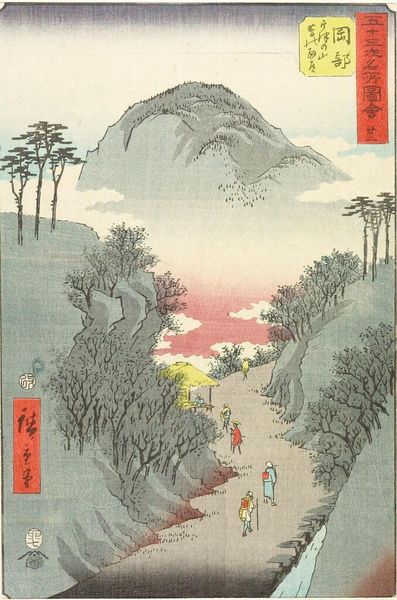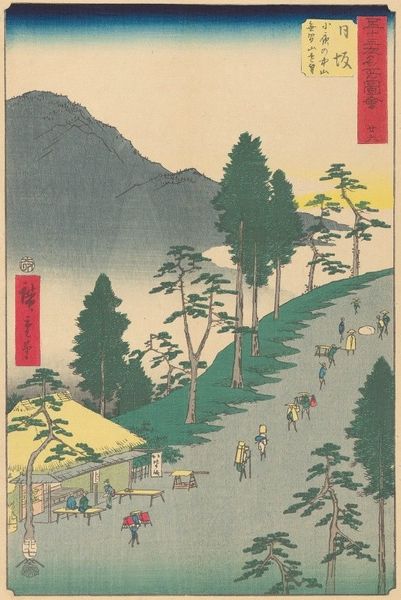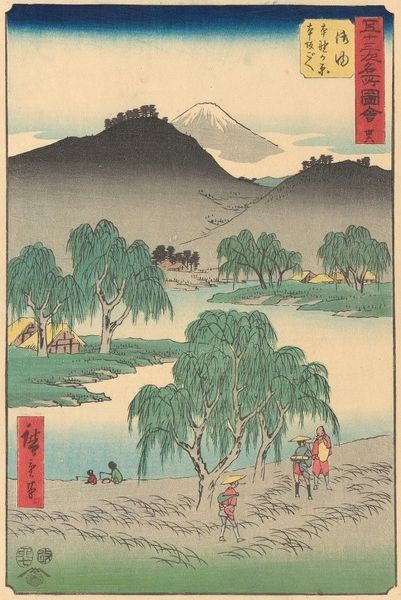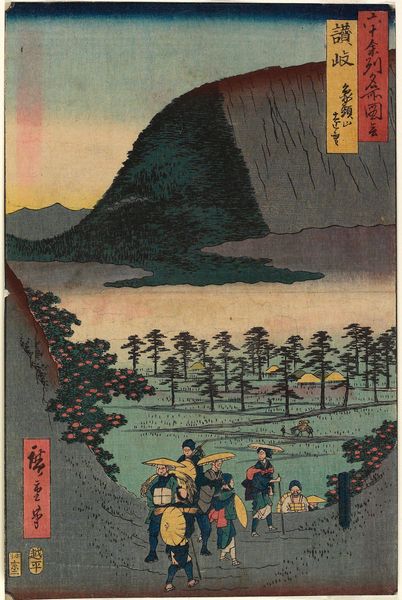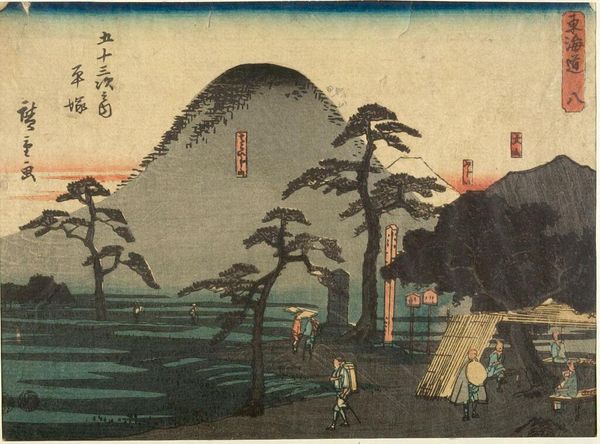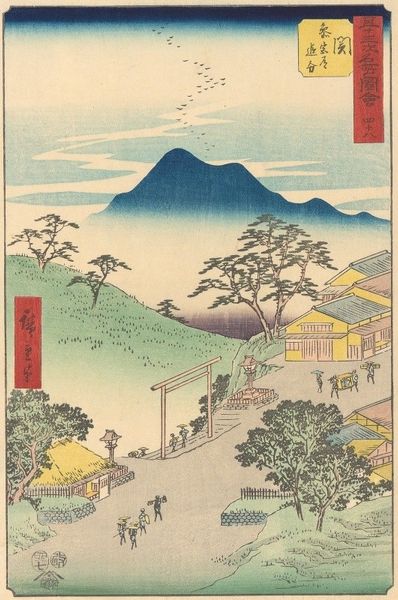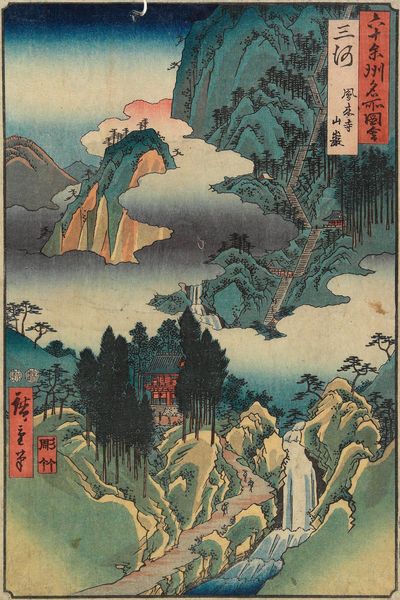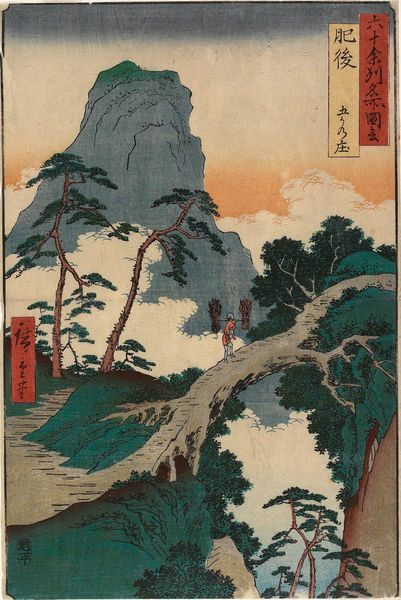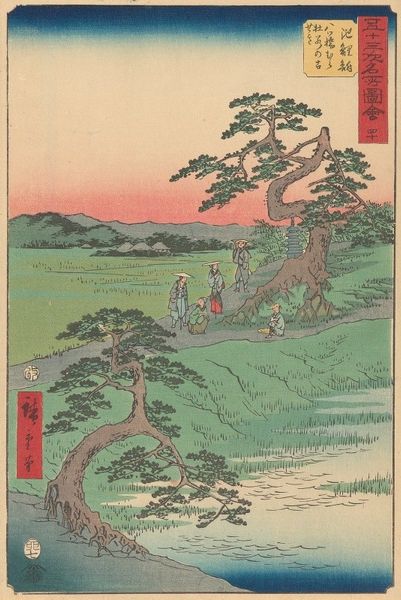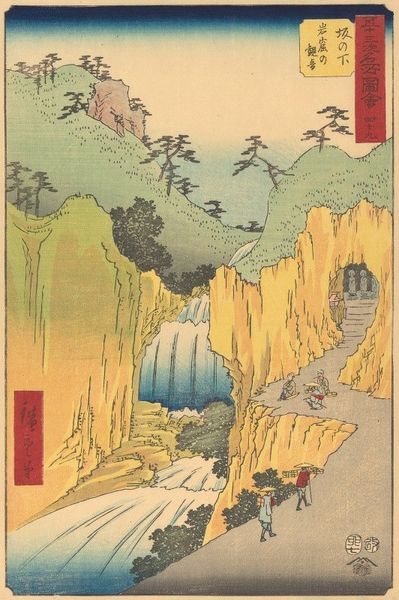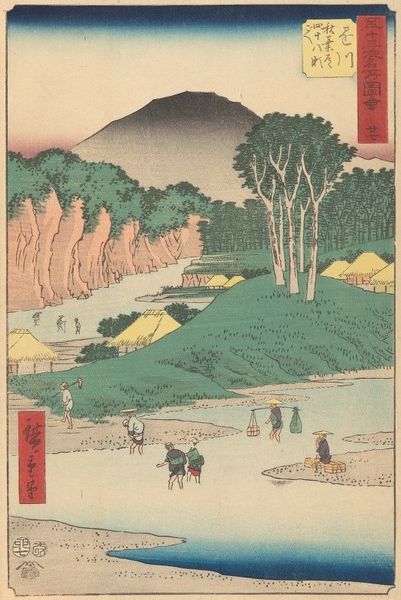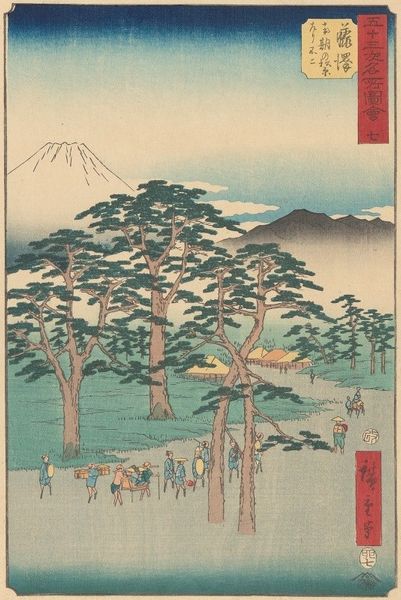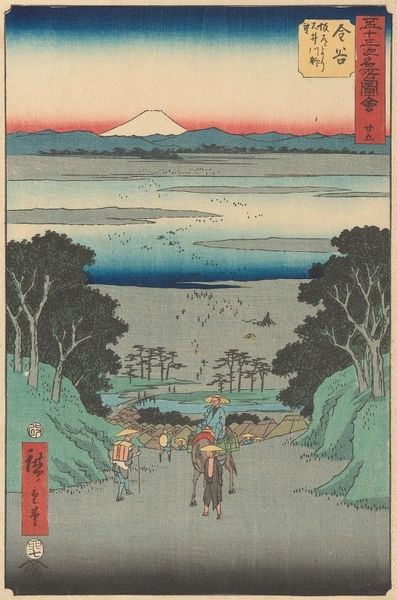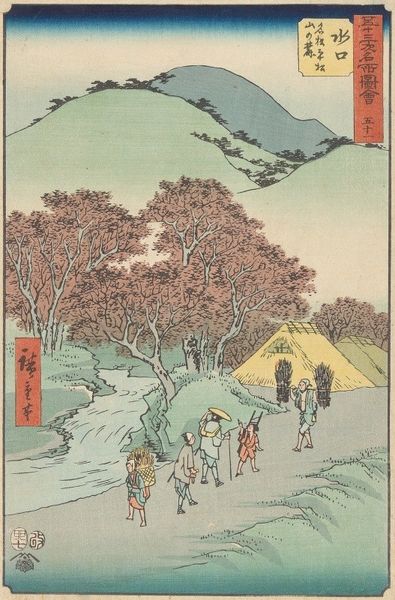
print, plein-air, woodblock-print
# print
#
plein-air
#
asian-art
#
landscape
#
ukiyo-e
#
woodblock-print
Copyright: Public Domain: Artvee
Editor: This woodblock print, titled *Okabe*, was created in 1855 by Utagawa Hiroshige. I find it so serene; the misty landscape feels very dreamlike. What do you see in this piece, looking at it from an iconographic perspective? Curator: Beyond the immediately visible landscape, this print offers a symbolic journey. Notice how the road winds, leading the eye—and the traveler—toward that mountain. Mountains in ukiyo-e prints often represent stability, permanence, even enlightenment in some contexts. Editor: So, the mountain is more than just a mountain? Curator: Precisely. And consider the travelers themselves. They're not just figures in a landscape; they embody the human experience, our constant movement, and pursuit of… something. Are they pilgrims? Merchants? The path itself implies purpose, a story unfolding. The color palette is striking in that the colors almost fade together into a harmonious blue hue. How do these stylistic qualities affect your experience of the artwork? Editor: It definitely adds to the peacefulness. The softness mutes reality. I see how these choices emphasize a reflective state of mind, which might also speak to cultural memory connected to travel. Curator: Absolutely. Images can carry generations of emotional understanding. Hiroshige isn't just depicting a place; he’s inviting us to contemplate journey, destination, and perhaps the search for something greater than ourselves, visualized through culturally specific symbolism and coloring. Editor: I see that now. I hadn’t considered how much symbolism could be packed into a landscape print! Curator: The surface simplicity belies its rich emotional and symbolic undercurrents!
Comments
No comments
Be the first to comment and join the conversation on the ultimate creative platform.
